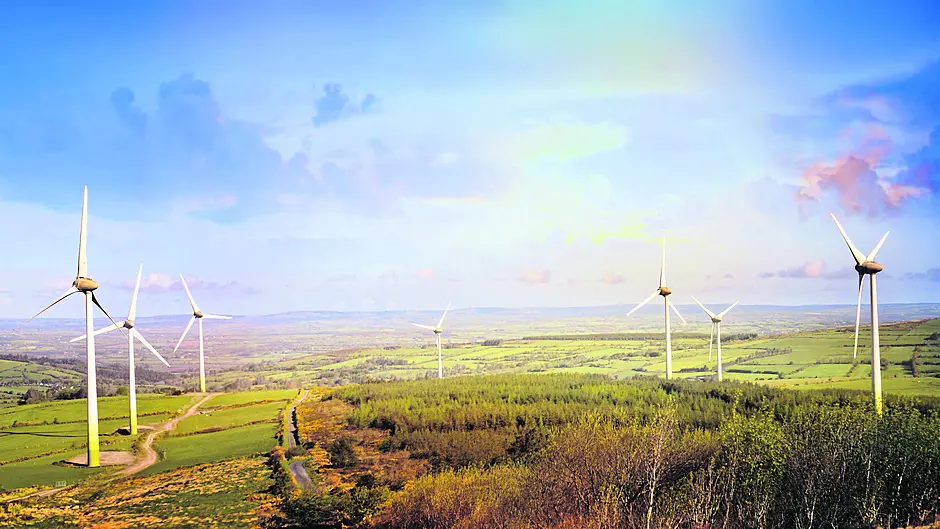by Michéal Collins
WE are on the cusp of a major change in the provision of energy to power our homes and business.
With technology and the bountiful supply of natural resources there is no reason why Ireland should not only be self-sufficient in energy supply, but also be a leading world exporter of same.
This could contribute enormously to the national exchequer and help us provide housing and other essential infrastructure and services for our people.
This would not be the only time that the farming community supplied the energy needs of the nation.
During the Second World War and for years afterwards, the turf industry contributed enormously to the energy demands of our nation. Turf was used to fuel trains, industry, hospitals and heat our homes.
Ireland has set a target of up to 80% renewable energy by 2030 and to be carbon neutral by 2050.
Yet only 36.4% of our electricity came from renewable sources in 2021. In this article I will outline the various sources of renewables that farmers can explore and provide a valuable income stream for farmers.
Technically, wind energy is the front runner in efficiency when it comes to natural clean energy. However, the development of a windfarm is not for the faint-hearted.
It costs about €1m per megawatt. So, a 20-megawatt windfarm could cost in the region of €20m. The bureaucracy and regulation today surrounding the development of one is also prohibitive. In fact, this red tape is somewhat inhibiting progress in this sector.
Most landowners prefer to lease their land to specialised windfarm developers. The annual rent depends on the output of the turbine worth a guaranteed annual minimum payment.
This is liable to income tax. In relation to passing on a windfarm by way of gift or inheritance, the area where the turbine stands will be valued as commercial which would rule out obtaining agricultural relief. The valuation will be based on the income stream generated by the turbine. It should not affect the agricultural relief on the remainder of the land once properly planned.
Solar panels offer great potential for Irish farmers. Solar farms can be of any size but around 4-5 acres is required for each megawatt of electricity containing 4,000 panels per megawatt. A typical solar farm would be 30-40 acres but developers are more than willing to look at parcels bigger than this.
The annual lease is usually around €1,000 per acre but the income is taxable. Of course, it is possible for landowners to develop it themselves but as outlined for windfarms, it would be challenging. The installation of solar PV panels on agricultural and commercial buildings presents fantastic opportunities. PV panels displace the energy one normally would buy from the grid.
For example, If one’s electricity need, a particular time, is 10kw and the PV panels produce 5kw, one would import 5kw. The sad reality is that in Ireland the excess electricity generated on farm/commercial buildings is not paid for by electricity suppliers.
However, change is on the way here and it behoves all interested parties to ensure our politicians expediate this. As we enter a new and exciting era of energy production, it is vital that all vested interests work together, to not only ensure we become energy-independent, but become energy exporters. However, government and farm organisations need to play a more supportive and active role. Bureaucracy and regulation need to be reduced. As outlined in a previous emergency, Irish farmers contributed significantly to the energy supplies of the nation, and now is the time again to borrow from an old saying: ‘history repeats itself’.
• Michéal Collins is an accountant with FDC in Bantry.









